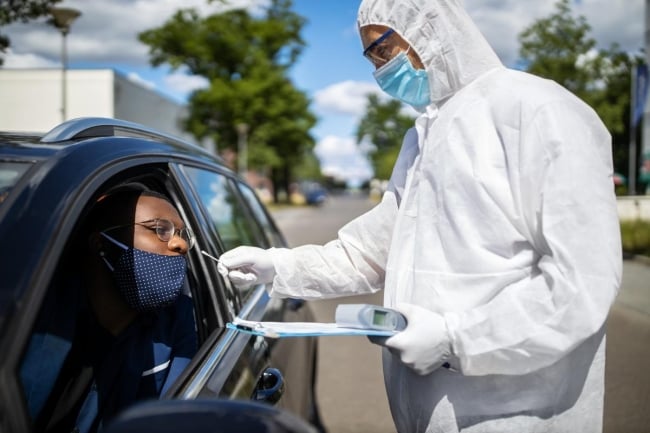You have /5 articles left.
Sign up for a free account or log in.

alvarez/Getty Images
In a truly unprecedented semester, full of losses, exhaustion and frustration, colleges learned more about how to keep students, staff and faculty safe amid the ongoing pandemic. While most colleges have not reached the frequency and magnitude of testing for COVID-19 that some experts recommend, it appears that levels of testing did increase over the course of the semester.
Only 22 percent of colleges surveyed for a recent report from the American College Health Association said they required students to be tested before arrival at the beginning of the semester. About 37 percent said they required testing at arrival.
But by the end of October, ACHA’s fourth COVID-19 survey, released this month, showed that roughly 84 percent of colleges that responded were doing some sort of testing for the virus SARS-CoV-2. About 70 percent were testing some asymptomatic students. Over 20 percent of those doing asymptomatic testing were testing at least twice per week.
Testing became cheaper and easier as the semester went on, experts have said. And as prominent campuses dealt with large outbreaks when students returned, some administrations may have realized the importance of testing in keeping campus open.
“Through the semester all the schools learned a lot about testing,” said Gerri Taylor, co-chair of ACHA’s COVID-19 task force. “I think people learned from watching others.”
Over 65 percent of colleges with residential students said they were conducting surveillance testing for those students. More than half of those doing surveillance testing said they were testing residential students at least weekly.
An earlier data set, released by Davidson College’s College Crisis Initiative and analyzed by NPR, suggested that only one-third of colleges were performing surveillance testing. The discrepancy between the two could show an increase in testing with time (the data for NPR’s analysis were collected nearly a month earlier), differences in the sample or differing definitions of surveillance testing.
While some institutions, like Colby College and the University of Illinois at Urbana-Champaign, pioneered a twice-weekly testing schedule, many others tested sporadically. Some scientific modeling has suggested that colleges should test their students every two days to avoid outbreaks.
While the increases in testing are certainly good for campus safety, the report also shows the flip side of those numbers. That is, roughly 16 percent of campuses said they were not doing any testing at all for COVID-19. Of the campuses with residential students, 35 percent said they were not doing asymptomatic testing for those students.
Among the major reasons ACHA survey respondents gave for not testing was a lack of human resources.
“There are colleges that just don’t have the capability of getting the tests, paying for it, having the staff to perform the testing. Their turnaround times are long,” Taylor said.
The lack of staff resources especially could hinder efforts by colleges to vaccinate their students in the spring, if they are indeed part of the vaccination process.
“They’ll need to be setting up some systems to track the vaccine, to track who’s gotten it, when they are getting a second dose. They want to make sure their high-risk students are covered,” Taylor said. “This adds another responsibility on top of the already extensive responsibilities with testing, contact tracing, isolation and quarantine.”
The ACHA surveys also collect monthly metrics from colleges in regard to tests and cases. Those questions have low completion rates and should not be given too much weight. However, respondents indicate a total of 17 students hospitalized for COVID-19 in August and September and two COVID-19-related deaths among students.
As eyes begin to turn to January, Taylor said colleges could consider prearrival or upon-arrival testing, emphasize masks, and take stock of local conditions.
“Colleges need to really look at the trends and the prevalence in their states in terms of how they will restart the semester. If the trends are going up, up, up, they’re going to have to look at, is it the right time to start back?” she said. “How many students will they bring back to face-to-face classes?”
The report is based on a survey of 289 ACHA member colleges. Respondents were predominantly four-year colleges. Over half were in urban areas.




